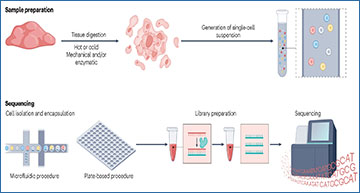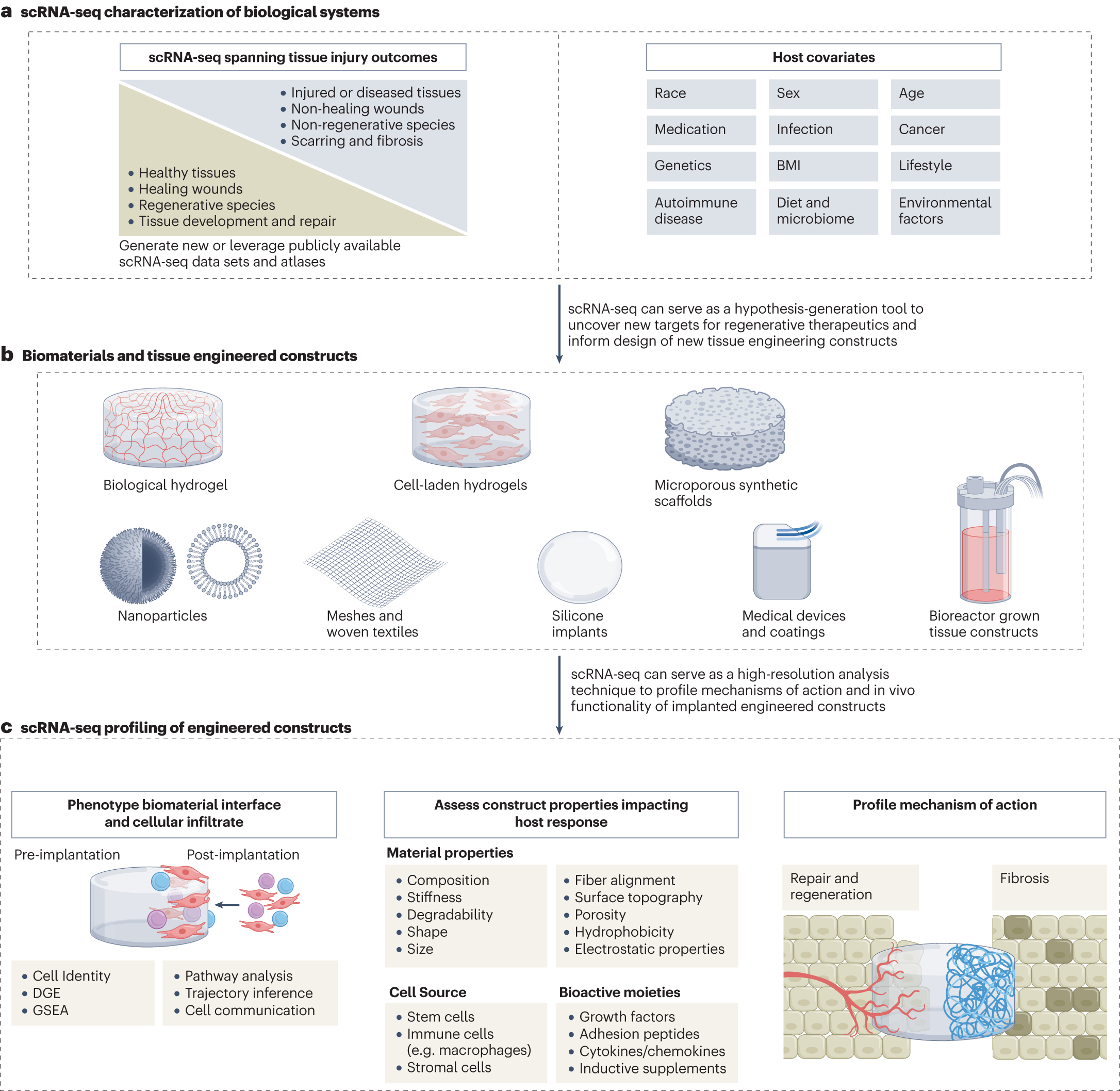Regenerative medicine and tissue engineering aim to promote functional rebuilding of damaged tissue. Comprehensively profiling cell identity, function and interaction in healthy tissues, as well as understanding how these change upon tissue disruption, such as that caused by injury, ageing or infection, is foundational to advancing tissue engineering and regenerative therapeutics. Tissue injury response is a highly dynamic process driven by complex interactions between immune and stromal cell populations, with dysregulation leading to deleterious fibrosis and chronic inflammation. Advances in single-cell RNA sequencing now allow in-depth mapping of the complex cellular response to injury and biomaterial implantation. Researchers at the Johns Hopkins University first describe the fundamentals of sequencing and computational methods for the generation and analysis of high-dimensional single-cell RNA sequencing data sets. They then highlight how these methods can be applied to study tissue injury responses and guide the rational design of biomaterials and regenerative therapeutics.
Application of scRNA-seq to biomaterials and tissue engineering
a, Single-cell RNA sequencing (scRNA-seq) can be used to compare various tissue injury outcomes (ranging from regeneration and healing to scarring and fibrosis) and investigate the impact of host covariates (such as sex, race, age and infection). b, The data obtained with scRNA-seq inform the design of new biomaterials and tissue engineered constructs. c, scRNA-seq can profile the mechanism of action of engineered constructs following implantation, assess how construct design properties impact host response and explore the biological mechanisms driving regeneration or fibrotic encapsulation. BMI, body mass index; DGE, differential gene expression; GSEA, gene set enrichment analysis.
Ruta A, Krishnan K, Elisseeff JH. (2023) Single-cell transcriptomics in tissue engineering and regenerative medicine. Nat Rev Bioeng [abstract]





